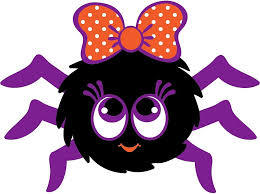

For those of you teaching ESL/EFL to Spanish-speaking students, it’s a good idea to have an understanding of some of the common errors they make. Check out our list below!
1 - Translating
Many of the errors Spanish-speakers make while speaking English occur because they are still thinking in Spanish and simply translate their thoughts to English without really considering the rules or differences in English. This is why we encourage ESL/EFL classes to be conducted solely in English, to discourage our students from wasting time and energy translating. Mastering this will also require lots of practice outside of class like listening to podcasts or watching TV in English. The following examples are just some of the ways translation errors manifest themselves in our students.
| What they say | What they mean to say |
| I have 35 years. | I am 35 years old. (Many expressions that use “tener” in Spanish, use the verb “to be” in English.) |
| I am agree. | I agree. (In English, “agree” is a verb. |
| The husband of my sister | My sister’s husband (We use the ‘s to show ownership.) |
| It depends of…. | It depends on…(Many prepositions do not translate to the same word in the two languages.) |
How to Teach Grammar in Your ESL Classroom
2 - One Word with Two Translations
Another situation in which English students make mistakes is when there is one word in Spanish that can be translated into two different words in English, which is tied to the problem of translating. This was the same challenge we had when learning Spanish. For instance, the verb “to be” in English can be translated to “estar” or “ser” depending on the situation. So confusing! Here are some of the confusing words for Spanish-speakers learning English!
| Make vs. Do |
| Say vs. Tell |
| Win vs. Beat |
| Watch vs. Look |
| -ing / -ed adjectives (Bored vs. Boring, Interested vs. Interesting) |
3 - False Friends
Cognates are words that either look or sound similar in the two languages, like “telephone” and “teléfono” or “garden” and “jardín.” These are really helpful for language-learners, however, be careful! There are a number of “false friends” or words that appear to be cognates but really are not, and this can cause lots of confusion and even embarrassing situations! The following list shows a handful of examples of these “false friends.”
| Embarrassed ≠ embarazada (pregnant) |
| College ≠ colegio (high school) |
| Molest ≠ molestar (to bother) |
| Actual ≠ Actual (current) |
| Assist ≠ asistir (to attend) |

4 - Subject/Verb agreement
In Spanish, subjects are implied by the conjugation of the verbs. Therefore, actually using the subject in the sentence is optional. In English, however, it is necessary to always use the subject. You can see why your students might forget to include the subjects, so make sure you emphasize this point from the beginning! Also regarding subject/verb agreement, students that are stuck in the habit of translating will make errors like “People is…” and “Everyone are…” since that’s how they are said in Spanish.
Teaching English in Costa Rica
5 - Gender Confusion
In Spanish, all nouns are assigned a gender, where in English, the gender-neutral subject pronouns “it” or “they” can be used to refer to objects and animals that we don’t know the sex of. For instance, if I see a spider, I say, “Kill it!” On the other hand, my Spanish-speaking students tend to say “Kill her!” as “spider” is a feminine noun in Spanish. Or they assign genders to inanimate objects, like the table. When the students are first learning about this difference in the two languages, they might say something like, “She is brown,” because the noun “mesa” is feminine in Spanish.

6 - Pronunciation
Although grammar can be challenging and take a lot of work to master, arguably the most difficult part of learning English for students that speak Spanish as a first language is: Pronunciation! Spanish is a phonetic language with rules that are always followed, and if a rule is to be broken, we are given some written indication like an accent mark or a tilde. English does not have this benefit! The vast and inconsistent vowel sounds in English will be the most daunting component of pronunciation for our students, especially the schwa /?/. The schwa sound is an unstressed vowel sound that often sounds like “uh.” It can be represented by any vowel like in the examples shown in the chart below. It can also be different in other dialects. For instance, “water” will end in a schwa when said by someone who speaks British English. How confusing! There are no rules to follow; the students need to practice a lot and memorize!
| a | adept |
| e | celebrate |
| i | decimal |
| o | harmony |
| u | supply |
| y | syringe |

Keep your ears open for these errors in your classes and take the time to correct them! Want more information and ideas on how to meet the needs of your ESL/EFL students?Take our 4-week onsite TEFL training in Costa Rica!
Why and How do I Correct my ESL/EFL Students' Errors?

